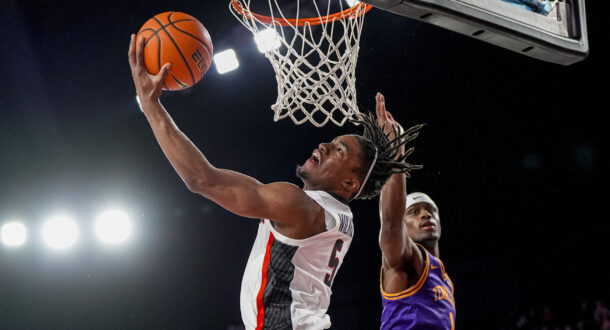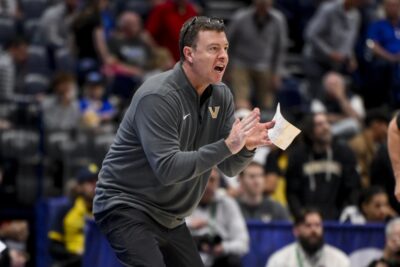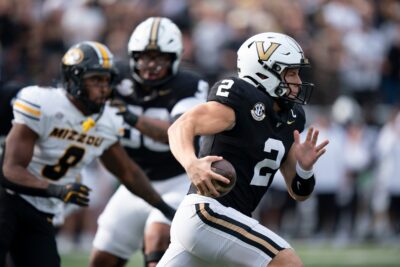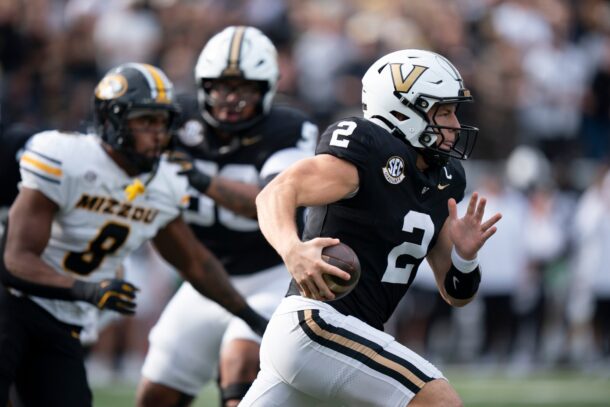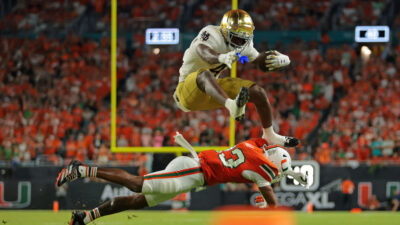
Grok is the AI assistant on X and it has some strong opinions, even on things like SEC football. We’ve used it in recent weeks to make some bold SEC predictions for 2025, to fill out its preseason All-SEC ballot and even to rank all 16 SEC football stadiums.
Now we’re turning our attention to the towns those football stadiums are located in.
College football fans, and SEC fans in particular, are passionate about their college towns. So which SEC cities are the best of the best?
Here’s how Grok ranked all 16 SEC college towns, starting with the best of the bunch:
Grok’s Ranking of All 16 SEC College Towns
Ranking the 16 SEC college towns is tricky because “best” and “worst” depend heavily on what you value—size, game-day vibe, cultural offerings, affordability, or natural surroundings. I’ll base this on a mix of factors like livability, student-to-population ratio, cultural and entertainment options, academic and economic opportunities, and that intangible college town “feel,” drawing from available data and sentiment from sources like WalletHub, Saturday Down South, and posts on X. I’ll aim for a balanced take, acknowledging that preferences vary (e.g., small-town charm vs. big-city amenities). Here’s the ranking, from best to worst, with a brief explanation for each:
- Athens, GA (University of Georgia)
- Why: Athens is a quintessential college town with a vibrant music scene (R.E.M., Widespread Panic), lively downtown with bars and restaurants, and intense football culture. It’s walkable, has a strong student presence, and balances charm with sophistication. Posts on X and web sources consistently rank it high for its cultural offerings and game-day atmosphere.
- Population: ~127,315 (2020 census)
- Standout: Sanford Stadium’s picturesque setting and a nightlife with the most bars per square mile in the U.S.
- Oxford, MS (University of Mississippi)
- Why: Oxford’s charm lies in its small-town feel, historic Square, and the legendary Grove for tailgating. Cultural gems like Rowan Oak and Square Books add depth, and it’s praised for its Southern hospitality and food scene (e.g., Big Bad Breakfast). X posts often highlight its beauty and game-day appeal.
- Population: ~25,416 (2020 census, smallest in SEC)
- Standout: The Grove is considered the top tailgating spot in college football.
- Austin, TX (University of Texas)
- Why: Austin’s a big city with a college town vibe, thanks to UT’s massive presence. It’s a cultural hub with festivals like SXSW, a booming job market (5th-best annual job growth), and affordable pizza for students. It tops WalletHub’s 2025 ranking for its social environment and opportunities, though it’s less “traditional” as a college town.
- Population: ~961,855 (2020 census)
- Standout: Burnt orange pride and access to outdoor activities like the Colorado River.
- Fayetteville, AR (University of Arkansas)
- Why: Nestled in the Ozarks, Fayetteville offers natural beauty, hiking trails, and a lively Dickson Street with music venues like George’s Majestic Lounge. It ranks high for livability (No. 10 in U.S. News’ Best Places to Live) and has a welcoming vibe, per X posts.
- Population: ~93,949 (2020 census)
- Standout: Scenic views and a strong Razorback tailgate culture.
- Tuscaloosa, AL (University of Alabama)
- Why: Tuscaloosa lives and breathes Alabama football, with Bryant-Denny Stadium as its heart. The town’s compact, with a vibrant Strip and Quad, and ranks high for school spirit (No. 3 on MSN’s list). It’s a classic college town, though some X posts suggest Auburn edges it out slightly.
- Population: ~99,600 (2020 census)
- Standout: “Roll Tide” energy and historic campus architecture.
- Knoxville, TN (University of Tennessee)
- Why: Knoxville blends college town charm with a larger city feel, with Neyland Stadium’s unique riverfront setting and traditions like the Vol Navy. Its downtown offers decent nightlife, and it ranks well (No. 48 on WalletHub). Some X users rank it higher for its vibrancy.
- Population: ~190,740 (2020 census)
- Standout: “Sweet Caroline” at Neyland and a growing food scene.
- Nashville, TN (Vanderbilt University)
- Why: Nashville’s a major city, not a traditional college town, but Vanderbilt’s campus adds a collegiate pocket. The music scene (Grand Ole Opry, Ryman Auditorium) and nightlife are unmatched, but it feels less tied to the university. X posts debate its “college town” status.
- Population: ~689,447 (2020 census)
- Standout: Honky-tonks and celebrity sightings on Broadway.
- Baton Rouge, LA (Louisiana State University)
- Why: Baton Rouge is electric on game days, with Tiger Stadium (Death Valley) and Cajun tailgates. However, its larger size and higher crime rate (per some X posts) detract from the college town feel. It’s still a cultural hub with unique food and traditions.
- Population: ~227,470 (2020 census)
- Standout: Mike the Tiger and Cajun microwaves at tailgates.
- Gainesville, FL (University of Florida)
- Why: Gainesville’s sunny vibe, Paynes Prairie state park, and dive-bar culture (like Swamp restaurant) make it appealing. It ranks No. 5 on WalletHub’s list for its balance of affordability and student life, though some X posts rank it lower.
- Population: ~141,085 (2020 census)
- Standout: Gator pride and a laid-back, outdoor-friendly atmosphere.
- Columbia, MO (University of Missouri)
- Why: Columbia’s artsy downtown, film festivals, and three colleges (Missouri, Columbia College, Stephens College) create a vibrant scene. It ranks No. 10 on WalletHub for its student-friendly vibe, but some X posts place it lower due to a less intense game-day feel.
- Population: ~126,254 (2020 census)
- Standout: Hip, walkable downtown and Mizzou’s Homecoming tradition.
- Lexington, KY (University of Kentucky)
- Why: Known as the “Horse Capital of the World,” Lexington has a strong basketball culture and bourbon scene (Keeneland racetrack nearby). It ranks lower (No. 162 on WalletHub) due to its equine focus over college vibe, but X posts praise its hospitality.
- Population: ~322,570 (2020 census, largest in SEC)
- Standout: Rupp Arena and a stable economy.
- Auburn, AL (Auburn University)
- Why: Auburn’s a football town with Toomer’s Corner and a tight-knit community, but some X posts and web sources call it lackluster outside game days, citing a “trailer park” vibe. It still has charm and a decent food scene.
- Population: ~76,143 (2020 census)
- Standout: Rolling Toomer’s Corner after wins.
- College Station, TX (Texas A&M University)
- Why: College Station is all about A&M, with nearly 73,000 students dominating the town and traditions like Midnight Yell. It’s highly educated (No. 11 per Money magazine), but some X posts and web sources critique its hot climate and limited non-campus appeal.
- Population: ~120,511 (2020 census)
- Standout: Kyle Field’s intensity and Northgate nightlife.
- Norman, OK (University of Oklahoma)
- Why: Norman’s got OU football and the Sooner Schooner, but it ranks lower due to a less distinct college town feel, overshadowed by nearby Oklahoma City. X posts place it mid-tier, and it lacks the cultural buzz of higher-ranked towns.
- Population: ~128,026 (2020 census)
- Standout: Gaylord Family Oklahoma Memorial Stadium and affordable tuition.
- Columbia, SC (University of South Carolina)
- Why: As a state capital, Columbia feels less like a college town, with a campus that blends into downtown. Williams-Brice Stadium’s “Sandstorm” is electric, but X posts and web sources (e.g., TexAgs) call it underwhelming outside game days.
- Population: ~136,632 (2020 census)
- Standout: Beautiful campus gardens and nature nearby.
- Starkville, MS (Mississippi State University)
- Why: Starkville often gets flak (nicknamed “Starkvegas” sarcastically) for its small size and limited attractions. The Lois Dowdle Cobb Museum and Petty’s BBQ are highlights, but X posts and web sources consistently rank it last for its lack of culture and “prison-like” campus vibe.
- Population: ~25,653 (2020 census, smallest alongside Oxford)
- Standout: Cowbells at Davis Wade Stadium.
Adam is a daily fantasy sports (DFS) and sports betting expert. A 2012 graduate of the University of Missouri, Adam now covers all 16 SEC football teams. He is the director of DFS, evergreen and newsletter content across all Saturday Football brands.



